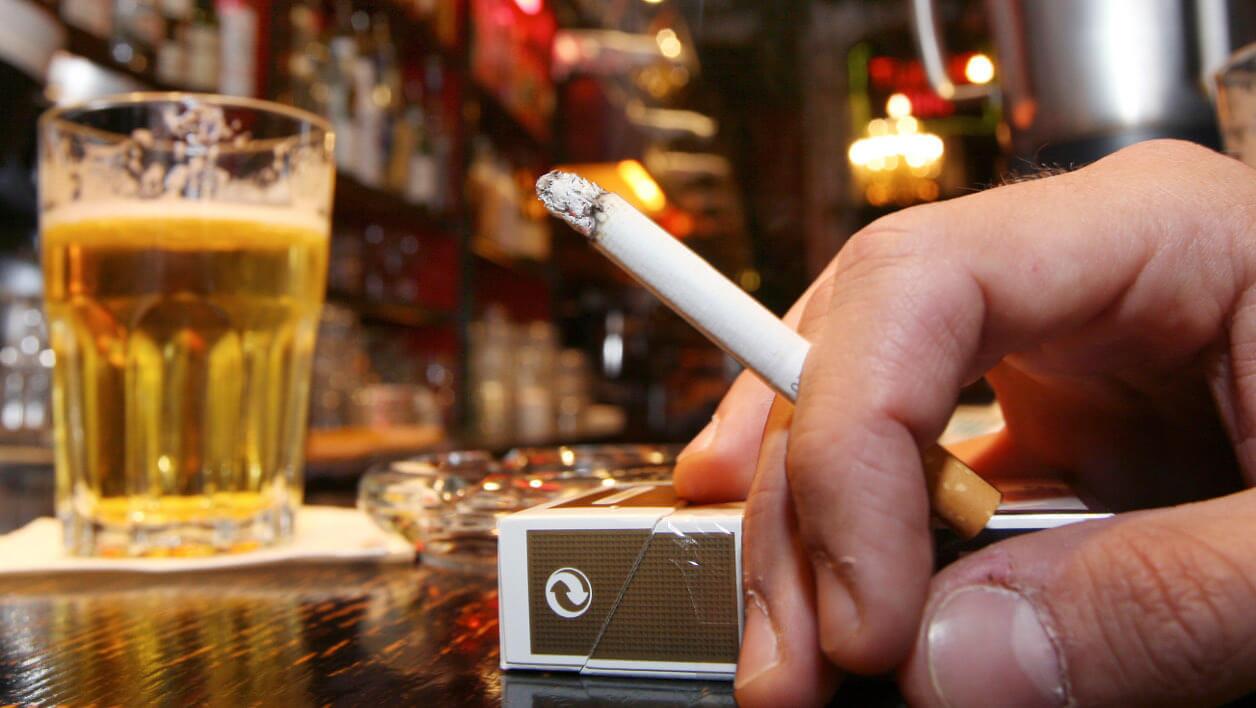Title: Smoking Exacerbates Severity in Acute Exacerbations of Idiopathic Pulmonary Fibrosis
Idiopathic pulmonary fibrosis (IPF) is a chronic, progressive, and ultimately fatal interstitial lung disease characterized by irreversible scarring of the lung parenchyma. A particularly devastating event in the natural history of IPF is an acute exacerbation (AE-IPF), a rapid and significant deterioration of respiratory function without an identifiable cause. These episodes are associated with high mortality rates, often exceeding 50% within the first few months. While the exact mechanisms behind AE-IPF remain elusive, emerging evidence strongly implicates cigarette smoking not only as a primary risk factor for developing IPF but also as a critical determinant in increasing the severity and lethality of these acute exacerbations. This article delves into the pathophysiological pathways through which smoking amplifies the damage during an AE-IPF, examines clinical outcomes, and underscores the imperative of smoking cessation.
The Pathophysiological Nexus: Smoking and IPF Pathogenesis
To understand how smoking worsens an acute exacerbation, one must first appreciate its role in the underlying disease. Cigarette smoke is a complex aerosol containing over 7,000 chemicals, including numerous oxidants, free radicals, and carcinogens. In genetically susceptible individuals, chronic exposure to these toxins is believed to initiate and perpetuate a cycle of repetitive alveolar epithelial cell (AEC) injury and aberrant repair. Instead of healing normally, the lung tissue responds with dysregulated fibroblast proliferation and excessive deposition of extracellular matrix (ECM), leading to the characteristic honeycombing and loss of lung function seen in IPF.
Smoking creates a pro-fibrotic environment primed for catastrophe. It disrupts the integrity of the alveolar-capillary barrier, impairs mucociliary clearance, and alters the lung microbiome. Furthermore, it induces a state of chronic oxidative stress and low-grade inflammation, overwhelming the body's antioxidant defenses like glutathione and nuclear factor erythroid 2-related factor 2 (Nrf2). This baseline vulnerability sets the stage for a more severe response to any subsequent insult that triggers an acute exacerbation.
Amplifying the Storm: Mechanisms of Increased AE-IPF Severity
An acute exacerbation is often described as a "perfect storm" within the lungs, featuring diffuse alveolar damage (DAD), overwhelming inflammation, and accelerated fibrosis. Smoking acts as a powerful catalyst in this storm, intensifying each component.
Exaggerated Oxidative Stress: The already depleted antioxidant capacity in the lungs of a smoker with IPF is completely overwhelmed during an AE. The exacerbation itself generates a massive burst of reactive oxygen species (ROS) from activated inflammatory cells. In a smoker, this surge is compounded by the direct oxidants from cigarette smoke. This intense oxidative stress causes further direct damage to AECs and endothelial cells, increases vascular permeability leading to worse pulmonary edema, and activates pro-fibrotic signaling pathways, thereby amplifying the core injury of DAD.
Dysregulated Immune and Inflammatory Response: Cigarette smoke alters innate and adaptive immunity. It can paradoxically suppress some host defenses while hyper-activating others, particularly the innate immune system. During an AE-IPF, there is an influx of neutrophils, macrophages, and other inflammatory cells into the alveoli. In smokers, this response is more pronounced and less controlled. The release of proteolytic enzymes (e.g., neutrophil elastase), pro-inflammatory cytokines (e.g., IL-1β, TNF-α, TGF-β), and pro-fibrotic mediators is heightened, leading to more extensive tissue destruction and a more vigorous pro-fibrotic response even during the acute phase.
Impaired Epithelial Repair: The ability of the lung epithelium to regenerate after injury is crucial for recovery from an acute exacerbation. Cigarette smoke directly impairs the function and survival of alveolar epithelial type II cells (AECIIs), which are the stem cells responsible for re-epithelializing damaged alveoli. In a smoking IPF patient experiencing an AE, this critical repair mechanism is severely compromised. With AECIIs unable to mount an effective regenerative response, the damage progresses unchecked, leading to more widespread scarring.
Coagulation Cascade Activation: AE-IPF is associated with intra-alveolar fibrin deposition, a product of the activated coagulation cascade. Cigarette smoke is a known pro-coagulant, promoting a hypercoagulable state. This synergy results in more extensive fibrin formation within the airspaces, which not further impedes gas exchange but also provides a scaffold for fibroblast migration and proliferation, directly linking the acute event to worse long-term fibrosis.

Clinical Evidence and Outcomes
The clinical correlation of these pathophysiological mechanisms is stark. Epidemiological studies have consistently shown that a history of smoking is one of the strongest risk factors for developing IPF. More recently, research has begun to focus on its impact on disease progression and acute events.
Patients with a history of smoking who experience an AE-IPF often present with more severe hypoxemia (lower PaO2/FiO2 ratios) and more extensive radiographic involvement on high-resolution computed tomography (HRCT) scans, showing diffuse ground-glass opacities atop underlying fibrotic changes. This translates directly to worse outcomes. These patients are less likely to respond to pharmacological interventions, such as high-dose corticosteroids, and have higher rates of mechanical ventilation requirement. Consequently, they face significantly higher in-hospital and short-term mortality rates compared to never-smokers who suffer an AE-IPF. The burden of a smoking history appears to be a key modifier of survival in this critical setting.
Conclusion and Implications
The evidence is conclusive: cigarette smoking is a major modifiable risk factor that significantly increases the severity and mortality of acute exacerbations of idiopathic pulmonary fibrosis. It achieves this by exacerbating the core pathological processes—oxidative stress, inflammatory dysregulation, impaired repair, and coagulation—that define these catastrophic events.
This understanding carries profound clinical implications. First, it reinforces the absolute necessity of aggressive smoking cessation counseling at every stage of IPF management. Quitting smoking remains the single most effective intervention to slow disease progression and potentially reduce the risk or mitigate the severity of a future acute exacerbation. Second, for researchers, it highlights the importance of stratifying patients by smoking history in clinical trials for AE-IPF treatments. A therapy that works in a never-smoker cohort may be ineffective in a population of former or current smokers due to the different intensity of the underlying pathobiology. Finally, it underscores the need for targeted therapies that can address the specific pathways amplified by smoking, such as potent antioxidant agents or novel anti-inflammatory drugs.
In the fight against IPF, combating the effects of cigarette smoke is not just about prevention; it is a critical strategy for improving survival in the disease's most perilous hour.
Tags: #IdiopathicPulmonaryFibrosis #IPF #AcuteExacerbation #Smoking #LungHealth #PulmonaryFibrosis #RespiratoryDisease #SmokingCessation #OxidativeStress #DiffuseAlveolarDamage #Pulmonology #PatientCare #MedicalResearch










